Pillars of world history in unknown graves
- Published
As scientists in the UK confirm that a skeleton found under a car park in the city of Leicester is that of Richard III, the BBC News website looks at other famous personalities in world history whose final resting places remain unknown.
Alexander the Great (356BC-323BC)
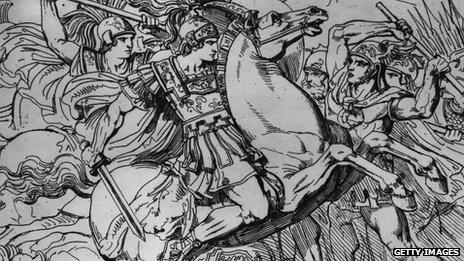
The whereabouts of Alexander's grave has been described as "one of the greatest mysteries bequeathed to us by the ancient world"
Mystery surrounds the whereabouts of the body of the man who created one of the largest empires of the ancient world, stretching from the Ionian Sea to the Himalayas.
After his death at the age of 32, Alexander's body was said to have been laid in a golden sarcophagus, reportedly filled with honey.
"It was the most renowned and respected shrine in the Roman Empire, the object of veneration by Julius Caesar, Cleopatra, Octavian, Caligula, Hadrian, Severus, Caracalla and a host of other luminaries," says the alexanderstomb website., external
"It stood for centuries within a sacred precinct the size of a large town at the heart of the greatest Greek city in the world. Yet at the end of the 4th Century, when the Christian emperor Theodosius outlawed paganism, it disappeared without trace, creating the greatest archaeological enigma of the ancient world."
In 2004, author Andrew Chugg in his book The Quest for the Tomb of Alexander the Great put forward one of many theories as to "the forgotten secrets of one of the greatest mysteries bequeathed to us by the ancient world".
He argues that Alexander's body was stolen from Alexandria in AD828 and is now in Venice where it may have acquired a false identity.
Genghis Khan (c1155-c1227)
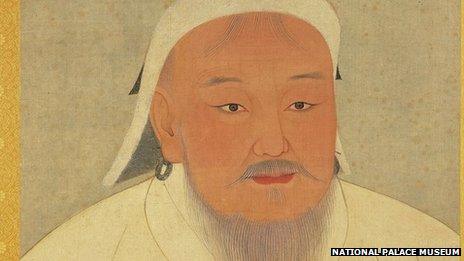
Genghis Khan's final resting place has always been shrouded by secrecy and myth
The final resting place of the creator of one of the largest empires in the world - stretching from the Caspian Sea to the Pacific - has been one of archaeology's most enduring mysteries.
Legend has it that anyone who even came near the remote and secret site of his funeral procession was killed.
The 800 horsemen who trampled his gravesite to keep its location secret were reportedly executed, as were the 1,000 labourers who escorted his body and dug his final resting place.
Folklore says that a river was diverted over his grave to make it impossible to find, while other tales state that trees were planted over the site. It has even been suggested that permafrost played its part in hiding the burial site.
Traveller Marco Polo wrote that even by the late 13th Century, the Mongols did not know the location of the tomb.
There is a tomb at his palace in China's Inner Mongolia Autonomous Region, but it only contains his personal effects, not his remains.
German, Japanese, American, Russians, and British tomb hunters - many using the latest ground visualisation techniques - have all have led expeditions in search of his grave, spending millions of dollars. But all have failed.
In December Newsweek reported that American and Mongolian scholars said they had found "compelling evidence of the location of Khan's burial site" on a mountain range in a remote area in north-western Mongolia.
Vlad the Impaler (1431-1476)
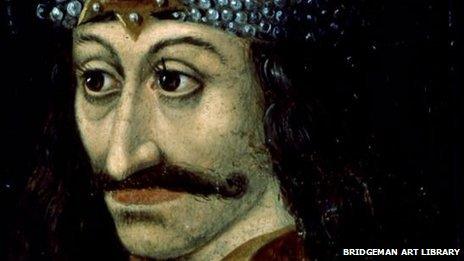
Experts say that it is unlikely Vlad the Impaler's grave will ever be found
The man who became the inspiration for Bram Stoker's novel Dracula is revered as a hero in Rumania and Bulgaria for his protection of the population both south and north of the Danube.
But his practise of impaling his enemies has somewhat tarnished his historical reputation.
While the impaler's battles against Turkish invaders has been much chronicled, little is known about the last hours of his life.
One legend has it that after he was decapitated by the Turks, his body was found in the woods around Bucharest by the monks of the Snagov monastery and was taken there be buried - since both Vlad and his father had donated money to that church.
But critics of this theory point out that this supposed burial place was dug up by explorers in 1931 - and all that was found were animal bones.
In response, supporters of the Snagov monastery site have suggested that he may be buried elsewhere on the monastery site.
They point out that remains were found after his death but have since disappeared. Others contend he is buried near the altar, but at a greater depth than was excavated.
Yet others suggest he may have been interred in a different monastery altogether.
Emperor Atahualpa (1497-1533)
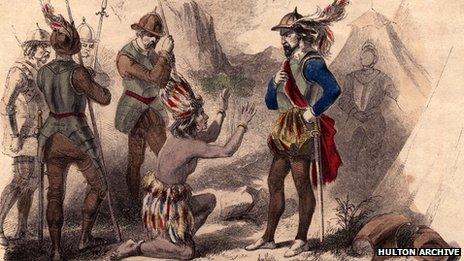
Some 40 years after the death of Atahualpa, the Inca empire had fallen
Atahualpa was the last of the native lords of the mighty Inca Empire, which spanned parts of present-day Peru, Chile, Ecuador, Bolivia and Colombia.
Ever since his death, mystery has surrounded the whereabouts of his tomb and its reputed treasure.
In May last year there were hopes that this mystery might be close to being solved.
Ecuadorean historian Tamara Estupinan said that Atahualpa's mummified body was located in lush, hilly lowlands, a six-hour drive south-west of Ecuador's capital city Quito.
If the discovery is confirmed, it could shed light on a tumultuous historical period marking the beginning of the Spanish colonial era in the Americas.
Archaeologists and historians have questioned whether his body remained in Cajamarca, the city in northern Peru where he died. No tomb was ever found.
Leonardo Da Vinci (1452-1519)
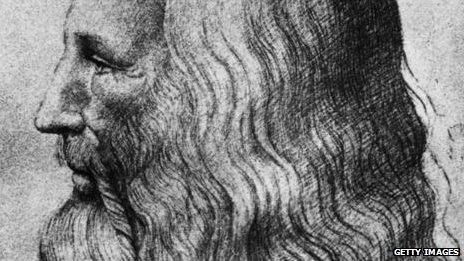
Leonardo Da Vinci was hugely influential as an artist, sculptor, engineer, scientist and inventor
It is not clear where the exact location of the grave of the great creative mind of the Italian Renaissance lies.
Da Vinci was originally buried in a church that was destroyed in the French revolution of 1789 and his remains were then reburied in the castle's smaller chapel of Saint-Hubert in 1874.
They lie beneath an inscription that describes them as "presumed" to be the master's.
There is no shortage of other famous people whose burial sites have been shrouded in mystery:
Eva Peron - three years after Eva Peron's death in 1952, her embalmed corpse disappeared, removed by the Argentinean military after a coup that deposed her husband, President Juan Peron. It then went on a global odyssey for nearly two decades before finally being placed in her family's mausoleum in Buenos Aires
Thomas Paine - the American and French revolutionary hero and allegedly the first person to write the words "the United States of America", died a penniless drunk in Manhattan. Only six people attended his funeral. Legend has it that his bones were turned into buttons when his body disappeared after it was exhumed
Davy Crockett - while it is common knowledge that he died defending the Alamo, it is not clear what happened to his body after that
Cleopatra - ancient historian Plutarch wrote that she was buried with her lover Mark Antony in an undisclosed location. Theories abound as to where that might be, with some saying it is in the ocean near Alexandria and others saying that it could be at the Taposiris Magna temple in Abusir, Egypt
Mozart - it is generally accepted that the famous composer was buried in a mass grave, as was common at the time